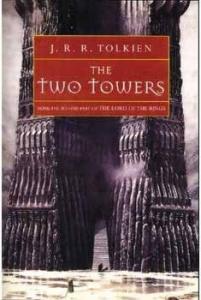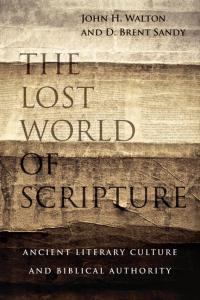 Western culture is, in many respects, a culture focused on the written word. Documents transmit cultural history, traditions and laws. The sagas of Harry Potter and Frodo were written before they were performed. Some of us still bristle at the ways in which the filming of the Lord of the Rings trilogy took liberties with Tolkien’s written word. The character of Tolkein’s Faramir in The Two Towers when he first encountered Frodo is important to the story. He stands firm and makes the right choice. The movie lost me at this point (although not completely). In the screenplay Faramir becomes something of a villain rather than a hero. In my opinion this modification to the story diminished it substantially. Tolkien’s printed word should stand! The character of Faramir and his ability to resist the ring is an important part of the tale.
Western culture is, in many respects, a culture focused on the written word. Documents transmit cultural history, traditions and laws. The sagas of Harry Potter and Frodo were written before they were performed. Some of us still bristle at the ways in which the filming of the Lord of the Rings trilogy took liberties with Tolkien’s written word. The character of Tolkein’s Faramir in The Two Towers when he first encountered Frodo is important to the story. He stands firm and makes the right choice. The movie lost me at this point (although not completely). In the screenplay Faramir becomes something of a villain rather than a hero. In my opinion this modification to the story diminished it substantially. Tolkien’s printed word should stand! The character of Faramir and his ability to resist the ring is an important part of the tale.
Many reading this post, of course, may disagree – thinking this change in Faramir is a minor detail of no real importance. The performed work still tells the same story, and does so in a fashion better suited to the big screen. A movie doesn’t communicate in the same way a book does.
 If Genesis 1-11 isn’t history then Christ wasn’t raised. We are under the spell of the printed word, living in a literate society and in a text-dominant culture. It is only in the context of a culture like ours that such a statement makes sense. In their book The Lost World of Scripture John Walton and Brent Sandy dig into the oral cultures in which the Old and New Testaments were written. These are not the same. The Old Testament was written in an ancient Near Eastern culture influenced by Mesopotamia and Egypt. Although writing existed, it was not the primary form of communication. In contrast the New Testament was written in the first century, in a culture dominated by Greece and Rome. Although written texts had a significant place in the culture, it was still an oral dominant culture – but not identical to the context of the Old Testament.
If Genesis 1-11 isn’t history then Christ wasn’t raised. We are under the spell of the printed word, living in a literate society and in a text-dominant culture. It is only in the context of a culture like ours that such a statement makes sense. In their book The Lost World of Scripture John Walton and Brent Sandy dig into the oral cultures in which the Old and New Testaments were written. These are not the same. The Old Testament was written in an ancient Near Eastern culture influenced by Mesopotamia and Egypt. Although writing existed, it was not the primary form of communication. In contrast the New Testament was written in the first century, in a culture dominated by Greece and Rome. Although written texts had a significant place in the culture, it was still an oral dominant culture – but not identical to the context of the Old Testament.
The context of the first century Roman world should inform our reading of the New Testament while the ancient Near Eastern context of Babylon, Syria, and Palestine helps us with the Old Testament. The Gospels and Genesis both come from God, but they don’t use the same structures and forms. The forms and structures used to communicate are not those at play in our 21st century culture. The historicity of Genesis 1-11 has no impact on the resurrection of Christ – not in terms of events and not in terms of our understanding of Scripture as inspired by God.
So how should we understand the New Testament? Oral communication is different from written communication in several important ways. In oral communication the speaker is in control, able to respond to the audience and tailor the approach to convey the intended message. Words, intonation, and body language are used to communicate. In written communication the reader is in control. The author puts thoughts and ideas on paper but has no lingering control. The reader can dissect and question, read and re-read the text. It is left to the reader to discern the intent of the original author. Small inconsistencies of no import in an oral communication become significant issues in the eyes of some who dissect a written text.
An author today constructing a text for the ages will exercise caution. He or she knows that the text must withstand the scrutiny of thousands of skeptical readers. An orator, on the other hand, passing down an oral history knows that he or she must be faithful to the story. But the same kind of detailed scrutiny is not expected. The Greek and Roman culture relevant to the New Testament was an oral-dominant culture. Much of the literature was either performed before being written or written to be performed or read. Walton and Sandy note “when authors wrote knowing that the majority of their audience would be hearers, not readers, and that someone would perform what they were writing, they would write with both readers and hearers in mind (see Rev 1:3). They would be concerned with what would help the public reading to be effective and with what would help the written text to be understood orally.” (p. 92)
We will understand and interpret the New Testament better if we try to understand the oral-dominant culture and the impact this culture had on the shape of the texts we have today.
I still think the movie took unwarranted liberties with the character of Faramir.
How does oral communication differ from written communication?
How does a sermon differ from an essay or a history paper?
If you wish to contact me directly you may do so at rjs4mail [at] att.net.
If interested you can subscribe to a full text feed of my posts at Musings on Science and Theology.















